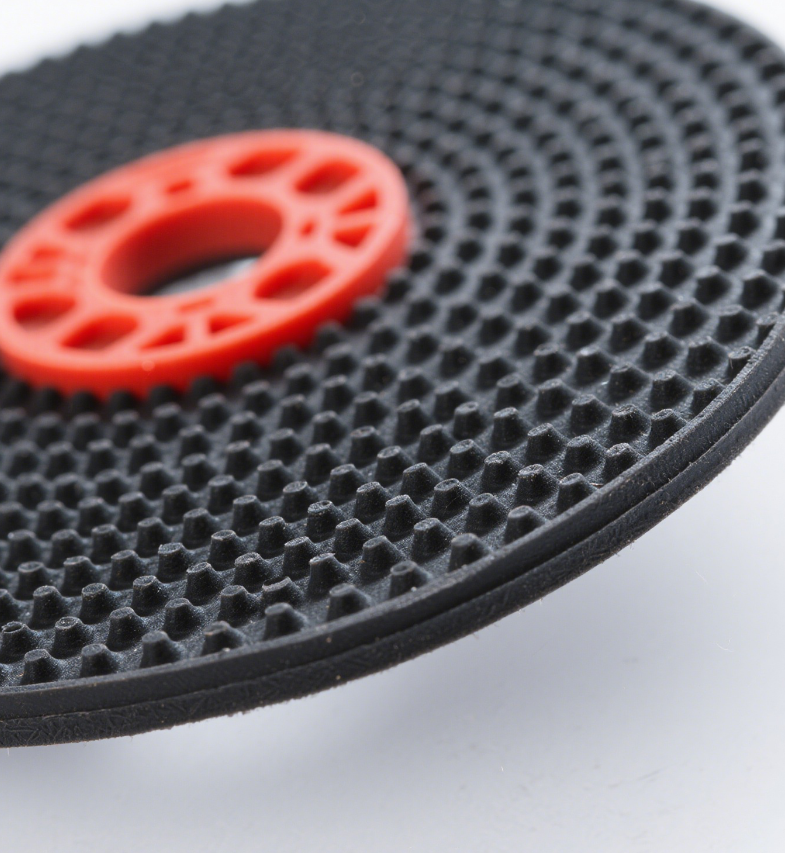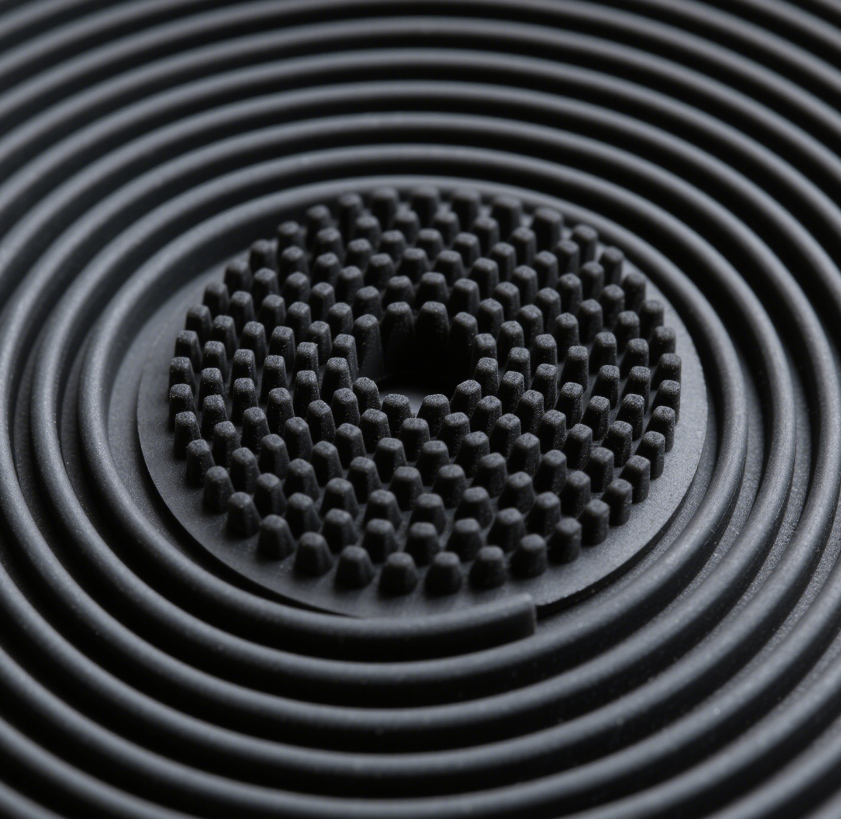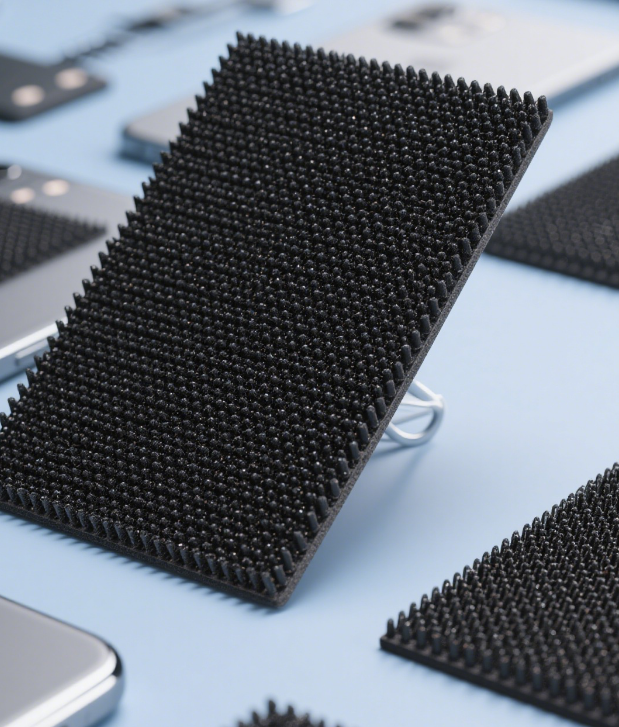Relationship between the Structure and Properties of Wave-Absorbing Silicone Rubber
2025/04/18
0
 I. Introduction
I. Introduction
As a key material for addressing electromagnetic interference and radiation issues, wave-absorbing silicone rubber is widely used in fields such as electronic communication and national defense and military industries. The quality of its performance depends on the material’s structure. In-depth research on the relationship between the structure and properties of wave-absorbing silicone rubber helps guide the design of formulations and the optimization of preparation processes, thus enabling the development of high-performance wave-absorbing materials. This article will systematically expound on the influence mechanisms of the structural characteristics of wave-absorbing silicone rubber on its wave-absorbing performance, mechanical properties, processing properties, etc., from the micro to the macro level.
II. Relationship between Microstructure and Properties
(I) Molecular Chain Structure of Silicone Rubber
- Backbone Structure: The main chain of silicone rubber is composed of Si-O bonds. The Si-O bond has a high bond energy (approximately 452 kJ/mol) and a large bond angle (143°), endowing the molecular chain with good flexibility and the material with excellent high and low-temperature resistance. In terms of wave-absorbing performance, the flexibility of the molecular chain affects the dispersion of fillers in the matrix, thereby indirectly influencing the wave-absorbing performance. For example, when the molecular chain has good flexibility, the fillers are more easily and uniformly dispersed, which is conducive to the formation of a continuous wave-absorbing network.
- Side Group Structure: The content of vinyl groups in vinyl silicone rubber has a significant impact on the degree of vulcanization cross-linking and the network structure. An increase in the vinyl content leads to an increase in the cross-linking density after vulcanization, resulting in an increase in the hardness and modulus of the rubber. At the same time, it will change the dielectric constant and magnetic permeability of the material, affecting the wave-absorbing performance. Generally, the vinyl content is controlled within the range of 0.05% – 0.3%. Within this range, a good balance between wave-absorbing performance and mechanical properties can be maintained while ensuring the vulcanization effect.
(II) Structure of Wave-Absorbing Fillers
- Shape and Size of Fillers: The shape (such as flake, fibrous, granular) and size of wave-absorbing fillers have a significant impact on wave-absorbing performance. Flake fillers (such as graphene, MXene) have a large specific surface area. After being dispersed in silicone rubber, they can form a conductive network, absorbing electromagnetic energy through electronic polarization and conductance loss. They can also extend the propagation path of electromagnetic waves inside the material, increasing the absorption efficiency. Fibrous fillers (such as carbon nanotubes) can be arranged in a specific direction to form an anisotropic wave-absorbing structure, optimizing the impedance matching of the material. The particle size of granular fillers (such as carbonyl iron powder) affects their dispersibility and magnetic properties in the matrix. If the particle size is too large, agglomeration will occur, reducing the wave-absorbing performance; if the particle size is too small, oxidation is likely to occur, also affecting the performance.
- Surface Properties of Fillers: The surface functional groups and surface energy of fillers affect their compatibility with the silicone rubber matrix. For example, functional groups such as hydroxyl and carboxyl groups on the surface of graphene oxide can form hydrogen bonds or chemical bonds with the molecular chains of silicone rubber, enhancing the interfacial binding force, reducing agglomeration, and improving wave-absorbing performance and mechanical properties. Fillers with high surface energy are prone to agglomeration, which is not conducive to dispersion. Therefore, surface modification is required to reduce the surface energy and improve the compatibility with the matrix.
(III) Cross-Linked Network Structure
Silicone rubber forms a cross-linked network structure through vulcanization. The cross-linking density is crucial to the material’s performance. An increase in cross-linking density improves the hardness, tensile strength, and modulus of the rubber. However, excessive cross-linking restricts the movement of molecular chains, leading to a decrease in the flexibility of the material and also affecting the dispersion of fillers and the propagation of electromagnetic waves. An appropriate cross-linking density can ensure certain mechanical properties of the silicone rubber and provide a stable supporting environment for wave-absorbing fillers, optimizing the wave-absorbing performance. For example, in the vulcanization system of vinyl silicone rubber and hydrogen-containing silicone oil, the cross-linking density can be adjusted by controlling the amount of hydrogen-containing silicone oil and the activity of the catalyst to achieve performance optimization.
III. Relationship between Macrostructure and Properties
(I) Dispersion State of Fillers
The uniform dispersion of wave-absorbing fillers in the silicone rubber matrix directly affects the wave-absorbing performance and mechanical properties. If the fillers are not uniformly dispersed, local concentration gradients or agglomeration will occur, causing reflection and scattering of electromagnetic waves during their propagation inside the material, reducing the wave-absorbing efficiency. At the same time, agglomerated fillers will become stress concentration points, reducing the mechanical properties of the material. By optimizing the mixing process (such as using two-roll mixing, internal mixer mixing, etc.) and adding dispersants, the dispersion state of the fillers can be improved, enhancing the material’s performance.
(II) Thickness and Shape of the Material
The thickness and shape of wave-absorbing silicone rubber have a significant impact on its wave-absorbing performance. According to the electromagnetic wave absorption theory, as the thickness of the material increases, the propagation distance of electromagnetic waves inside the material becomes longer, and the absorption loss increases. However, if the thickness is too large, impedance mismatch may occur, instead reducing the wave-absorbing performance. Therefore, it is necessary to design an appropriate material thickness according to the application frequency and the target wave-absorbing performance. In addition, the shape of the material (such as flat, curved, honeycomb, etc.) also affects the propagation and absorption of electromagnetic waves. For example, the honeycomb structure can increase the loss of electromagnetic waves through multiple reflections and scattering, improving the wave-absorbing performance.
(III) Design of Composite Structures
Combining wave-absorbing silicone rubber with other materials to form multi-layer composite structures or gradient composite structures can further optimize the wave-absorbing performance. In a multi-layer composite structure, the functions of each layer can be designed according to the electromagnetic parameters of different materials to achieve broadband wave absorption. For example, a material with a low dielectric constant can be used for the outer layer to match the air impedance, and a material with high loss can be used for the inner layer to absorb electromagnetic waves. In a gradient composite structure, by making the electromagnetic parameters of the material change continuously in the thickness direction, better impedance matching can be achieved, reducing electromagnetic wave reflection and improving the wave-absorbing performance.
IV. Optimization Strategies for the Structure-Performance Relationship
(I) Molecular Structure Design
Through molecular structure design, such as introducing special functional groups or copolymerization modification, the molecular chain structure and properties of silicone rubber can be adjusted. For example, introducing polar groups such as nitrogen-containing and sulfur-containing groups into the molecular chain of silicone rubber can increase the dielectric loss of the material and enhance the wave-absorbing performance; using the method of copolymerization modification to copolymerize vinyl silicone rubber with other silicone rubbers with special properties can combine the advantages of multiple properties.
(II) Filler Modification and Composite
Surface modification of wave-absorbing fillers (such as chemical grafting, coating treatment) can improve their compatibility and dispersibility with the silicone rubber matrix; combining different types of wave-absorbing fillers can utilize the synergistic effect to broaden the wave-absorbing frequency band and increase the wave-absorbing intensity. For example, combining magnetic fillers with electrical loss-type fillers, integrating the mechanisms of magnetic loss and electrical loss, can achieve efficient wave absorption.
(III) Optimization of Preparation Processes
Optimizing preparation process parameters such as mixing and vulcanization can control the microstructure and macrostructure of the material. For example, using appropriate mixing temperature and time to ensure sufficient dispersion of fillers; precisely controlling vulcanization conditions to obtain an ideal cross-linked network structure. At the same time, developing new preparation processes (such as 3D printing, electrospinning, etc.) can achieve precise control and personalized design of the material structure.
V. Conclusion
The structure and properties of wave-absorbing silicone rubber are closely related. From the micro-level molecular chains and filler structures to the macro-level dispersion state, material shape, and composite structure, each structural element interacts with others and jointly determines the wave-absorbing performance, mechanical properties, and processing properties of the material. A deep understanding of the structure-performance relationship and regulation through strategies such as molecular structure design, filler modification and composite, and optimization of preparation processes can optimize and enhance the performance of wave-absorbing silicone rubber, providing technical support for its application in more fields. In the future, with the continuous deepening of research on the relationship between material structure and properties, wave-absorbing silicone rubber will develop towards high performance, multi-functionality, and intelligence.
This report systematically analyzes the relationship between the structure and properties of wave-absorbing silicone rubber. If you would like to further expand on certain parts or add specific cases, feel free to let me know.
















